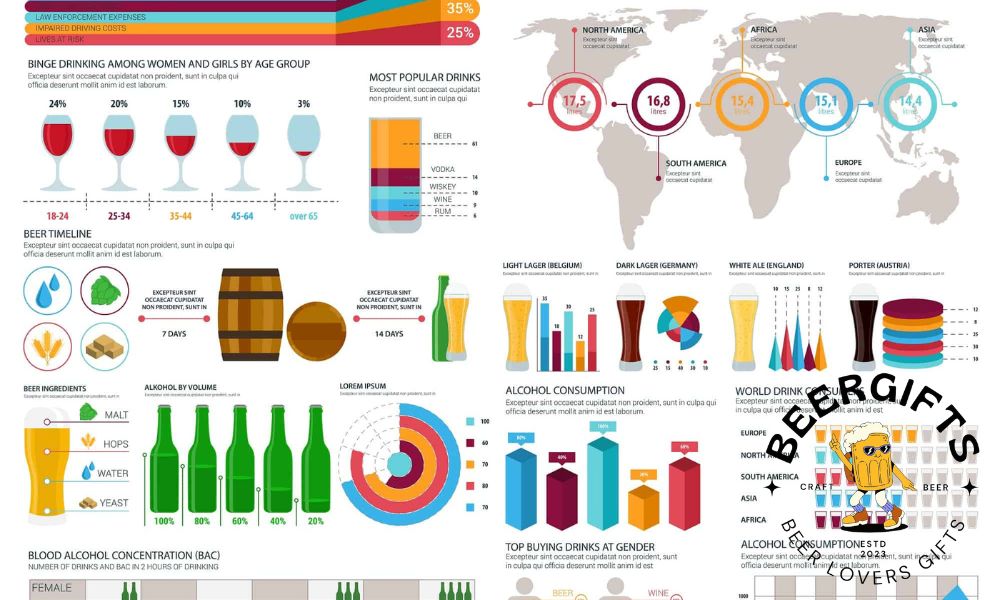Uncover the mystery behind intoxication levels with these surprising factors that influence how many beers it takes to feel drunk.
Table of Contents
For many individuals, the question of how many beers it takes to get drunk is a common point of curiosity. Whether you’re at a social gathering or simply unwinding after a long day, understanding the science behind alcohol metabolism, individual tolerance levels, and various factors influencing intoxication can provide valuable insight into responsible drinking habits.
Understanding Alcohol Metabolism
alcohol metabolism is a complex process that begins as soon as you take your first sip. When alcohol enters the body, it is absorbed into the bloodstream through the stomach and small intestine. From there, it travels to the liver where enzymes break it down into acetaldehyde, a toxic substance, and eventually into harmless byproducts that can be eliminated from the body.
Factors such as age, gender, weight, and overall health can influence the speed at which alcohol is metabolized. Generally, the liver can process about one standard drink per hour, with a standard drink typically being defined as 12 ounces of beer, 5 ounces of wine, or 1.5 ounces of distilled spirits.
Individual Tolerance Levels
While alcohol metabolism plays a significant role in determining how quickly your body processes alcohol, individual tolerance levels also play a crucial role in how intoxicated you may become. Tolerance levels can vary greatly from person to person and are influenced by a variety of factors.
Genetics can play a role in determining alcohol tolerance, as some individuals may have enzymes that are more efficient at breaking down alcohol. Additionally, factors such as body weight, age, and overall health can impact how sensitive a person is to the effects of alcohol. Regular alcohol consumption can also lead to tolerance buildup, requiring individuals to consume more alcohol to achieve the same level of intoxication over time.
Influencing Factors on Intoxication
While the number of beers it takes to get drunk can vary from person to person, there are several influencing factors that can affect intoxication levels. Different types of alcohol, for example, may have varying alcohol by volume (ABV) percentages, leading to differing levels of intoxication. Spirits with higher ABV percentages are generally more potent than beer or wine.

Image courtesy of www.beergifts.org via Google Images
Additionally, food consumption and hydration can impact how quickly you become intoxicated. Eating a substantial meal before drinking can help slow down alcohol absorption, while staying hydrated can help your body process alcohol more effectively. It’s important to be mindful of these influencing factors when determining how many beers it may take for you to reach a certain level of intoxication.
Conclusion
Cracking the code on how many beers it takes to get drunk involves understanding the intricate interplay between alcohol metabolism, individual tolerance levels, and various influencing factors. By delving into the science behind alcohol consumption, you can make informed decisions about your drinking habits and ensure that you approach alcohol consumption in a responsible manner.
Remember, knowing your limits and practicing moderation are key components of responsible drinking. By arming yourself with knowledge about how alcohol affects your body, you can enjoy a night out without compromising your well-being. So, the next time you find yourself wondering how many beers it takes to get drunk, consider these factors and make choices that prioritize your health and safety.
Frequently Asked Questions
How does alcohol metabolism differ between men and women?
Answer 1: Alcohol metabolism tends to be more efficient in men due to higher levels of alcohol-metabolizing enzymes. Women generally have a higher percentage of body fat, which can lead to a slower alcohol metabolism and increased blood alcohol concentration.
Can factors like stress or medication affect how alcohol affects the body?
Answer 2: Yes, stress and certain medications can impact alcohol metabolism and how it affects the body. Stress can elevate blood alcohol levels, while some medications may interact with alcohol, intensifying its effects or causing adverse reactions.
Is it safe to mix different types of alcohol?
Answer 3: Mixing different types of alcohol can lead to unpredictable effects due to varying alcohol content and interactions. This practice can increase the risk of overintoxication and potential health risks. It’s advisable to stick to one type of alcohol per drinking session.
How long does it take for alcohol to leave the body?
Answer 4: On average, it takes the body about one hour to metabolize one standard drink. Factors such as age, weight, and overall health can influence this process. However, it’s important to note that the effects of alcohol can linger even after it has been metabolized.
Generated by Texta.ai Blog Automation


Leave a Reply